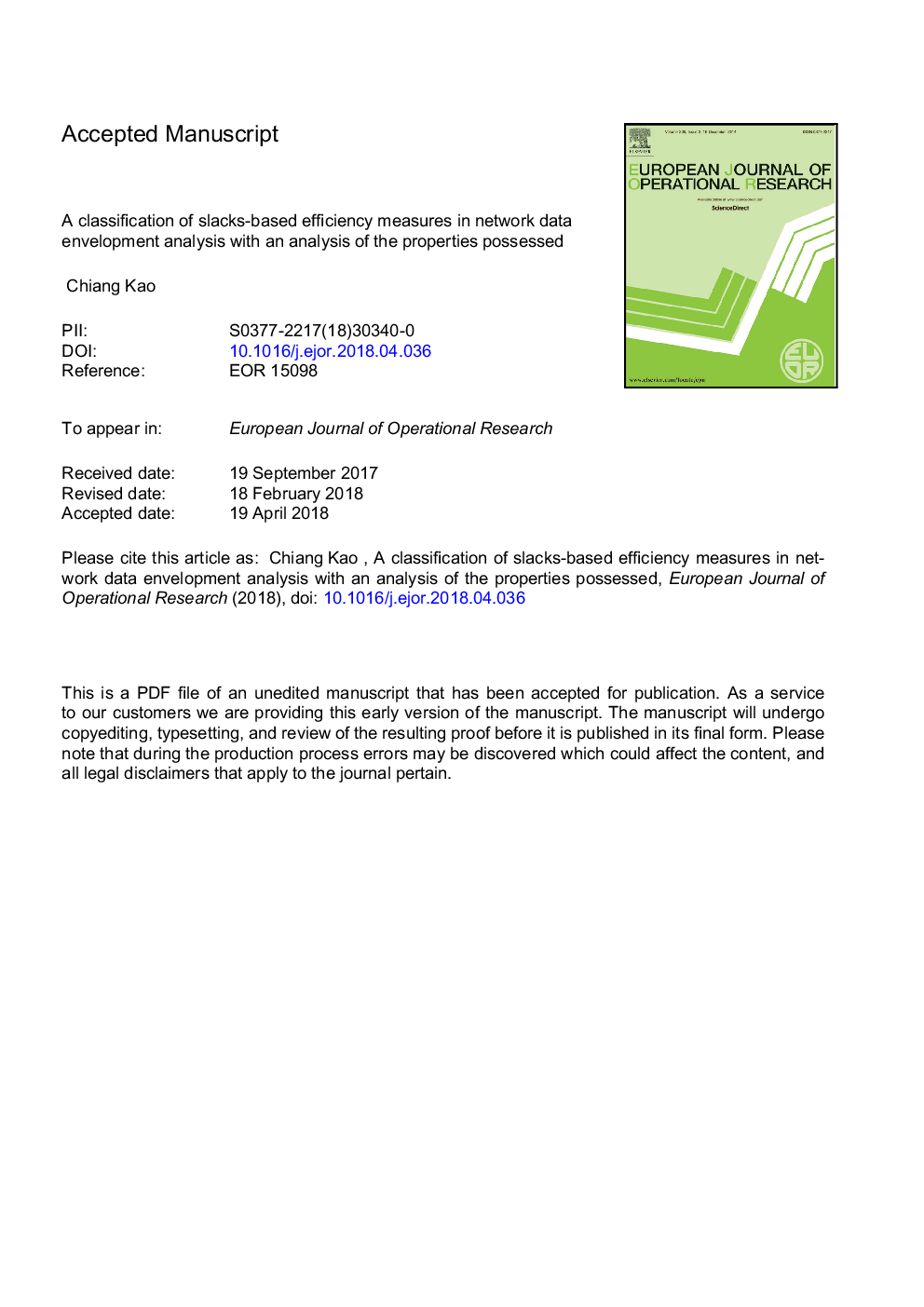| Article ID | Journal | Published Year | Pages | File Type |
|---|---|---|---|---|
| 6894556 | European Journal of Operational Research | 2018 | 41 Pages |
Abstract
The slacks-based measure (SBM) is a data envelopment analysis (DEA) technique that has been widely used in measuring the efficiency of a system treated as a whole unit. When the internal structure of a system is considered, different ways of modeling the intermediate products that link the component divisions based on the production possibility set (PPS) have been proposed. The types of PPSs can be classified as independent, relational, and cooperative, and the efficiency of the system can be measured from the viewpoint of either outside peers or inside managers for different purposes. This paper shows that models corresponding to the independent type do not properly describe the relationships between the divisions, and are not suitable for measuring the efficiency of network systems. Models corresponding to the relational type may cause a waste of the intermediate products in the system, and are not suitable for internal evaluations, while they are more persuasive for external evaluations. Those corresponding to the cooperative type are appropriate for both external and internal evaluations, and are able to obtain comparable results. An example is used to illustrate the characteristics of the efficiencies measured from the models corresponding to different types of PPSs.
Related Topics
Physical Sciences and Engineering
Computer Science
Computer Science (General)
Authors
Chiang Kao,
